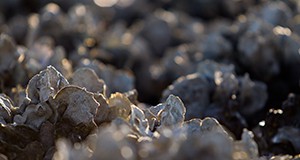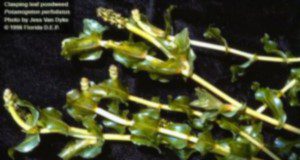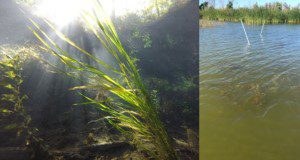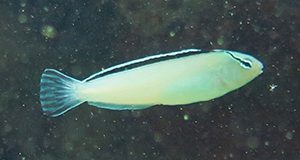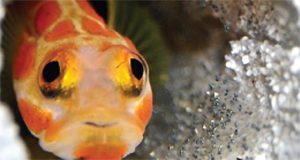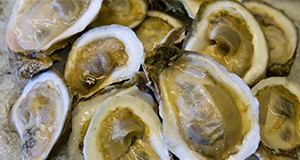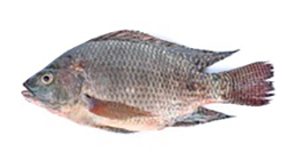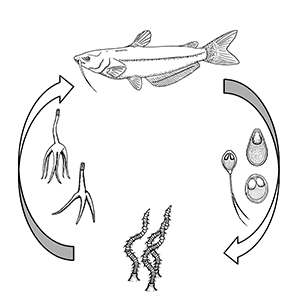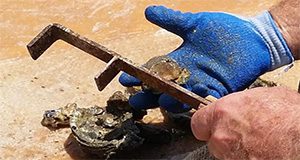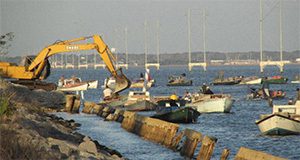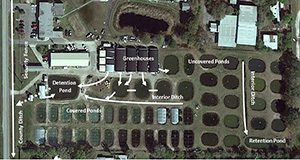Aquaculture is a growing industry in Florida, and there is particular interest in offshore marine aquaculture. While inland and coastal aquaculture (like for shellfish or ornamental fish) is managed by the Florida state agency Florida Department of Agriculture and Consumer Services (FDACS), offshore aquaculture also involves federal management agencies. However, there has been some confusion and disagreement about which federal agencies will manage and make decisions about offshore aquaculture in the United States. This document describes a recent history and current state of that discussion. This information is important for potential aquaculturists and other stakeholders to understand, and should also provide guidance to management and outreach agencies seeking to inform stakeholders about offshore aquaculture.
https://edis.ifas.ufl.edu/fa230
Category: Aquaculture
Oyster-Predator Dynamics and Climate Change
Oysters are one of the most important natural resources found in coastal and estuarine areas of Florida, but some Florida oyster populations appear to be declining. One possible driver of oyster population decline is increased mortality from oyster predators, including marine snails. But other environmental factors, such as changes in temperature or salinity, may also affect oysters. This 5-page fact sheet written by Gabrielle Love, Shirley Baker, and Edward V. Camp and published by the UF/IFAS School of Forest Resources and Conservation, Program in Fisheries and Aquatic Sciences describes how a changing climate may affect oysters directly but also indirectly by affecting their predators.
https://edis.ifas.ufl.edu/fa228
Pondweeds of Florida
This new 9-page factsheet describes the defining characteristics of the eleven pondweed species that are present in Florida. It serves as a pondweed identification guide for aquatic habitat managers, lake monitors, conservationists, and plant enthusiasts, and it gives some context on each species’ life history and ecological role. Written by Christine Rohal, Laura Reynolds, Carrie Reinhardt Adams, and Charles Martin, and published by the UF/IFAS Department of Soil and Water Sciences.
https://edis.ifas.ufl.edu/ss686
A Comparison of Planting Techniques for Submerged Aquatic Vegetation
Submerged aquatic vegetation has numerous benefits for aquatic ecosystems, from improving water quality to providing important habitat that supports a diverse food web. This new 6-page publication of the UF/IFAS Department of Soil and Water Sciences describes the breadth of options available to managers who wish to plant SAV at new locations. Because all methods have both benefits and drawbacks, and because all planting locations have different (often unknown) challenges for plant survival, managers may choose to try multiple methods to increase the likelihood for success. Written by Laura Reynolds, Carrie Reinhardt Adams, Enrique Latimer, Charles W. Martin, Christine Rohal, and Jodi Slater.
https://edis.ifas.ufl.edu/ss685
Aquaculture applications of the Family Blenniidae
Marine ornamental fish production is still in its infancy compared with its freshwater counterpart. About 1,800 wild-caught fish species are imported into the United States each year, clear proof of the need for the expansion of marine ornamental production to include new species and families of fish. Distinct behavior and a wide range of colors makes fish from the Blenniidae family, called blennies, a popular choice in the aquarium hobby. These hardy fish are small and rarely aggressive to other reef species and they eat algae and clean tank substrate. This 6-page fact sheet written by Jesse Von Linden, Joshua T. Patterson, Cortney L. Ohs, and Matthew A. DiMaggio and published by the UF/IFAS Program in Fisheries and Aquatic Sciences, School of Forest Resources and Conservation provides a brief overview of the family including description and taxonomy, natural history, culture techniques, a bit about disease challenges, and advice on marketing for ornamental Blennids.
https://edis.ifas.ufl.edu/fa225
Aquaculture Applications of the Family Gobiidae
Marine ornamental fish production is still in its infancy compared with its freshwater counterpart. About 1,800 wild-caught fish species are imported into the United States each year, clear proof of the need for the expansion of marine ornamental production to include new species and families of fish. The family Gobiidae is the fourth most imported family of marine ornamental fish. Gobies can be easily housed with a variety of other species of fish. Several have qualities that lend themselves to aquarium life. Some clean other fish and others sift the sand bed. Many naturally perch on the rockscape or corals, spending their time beautifying their surroundings with their bright colors and intriguing behavior. This 7-page fact sheet written by Jesse Von Linden, Joshua T. Patterson, Cortney L. Ohs, and Matthew A. DiMaggio and published by the UF/IFAS Program in Fisheries and Aquatic Sciences, School of Forest Resources and Conservation provides a brief overview of the family including description and taxonomy, natural history, culture techniques, a bit about disease challenges, and advice on marketing for ornamental Gobids.
https://edis.ifas.ufl.edu/fa226
Overview of Commonly Cultured Marine Ornamental Fish
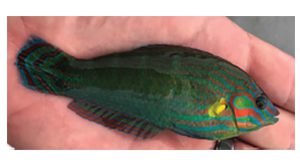
The production of freshwater ornamental fish dominates the ornamental aquaculture industry, yet the small marine ornamentals sector has grown substantially in recent years. This 7-page fact sheet written by Elizabeth M. Groover, Matthew A. DiMaggio, and Eric J. Cassiano and published by the UF/IFAS Program in Fisheries and Aquatic Sciences, School of Forest Resources and Conservation briefly reviews the more common groups of marine ornamental fishes cultured in the United States. As we learn more about marine ornamentals and as aquaculture protocols for marine ornamentals develop and improve, it is possible that more species may become economically feasible to produce and more cultured marine fish may begin to supplement wild-caught stocks in the marine aquarium trade.
https://edis.ifas.ufl.edu/fa224
Opportunities and Obstacles to Aquaculture in Florida
Aquaculture is growing in Florida as it is worldwide, but in Florida aquaculture has not yet reached its substantial potential. To understand why this might be, the University of Florida's Institute of Sustainable Food Systems organized and convened a meeting between small-agency, industry, and academic stakeholders to discuss the opportunities and obstacles to aquaculture in Florida. This 6-page fact sheet written by Edward Camp, Taryn Garlock, and James Anderson and published by the UF/IFAS School of Forest Resources and Conservation, Program in Fisheries and Aquatic Sciences, describes the proceedings of this meeting in the context of the broader scientific literature explaining why aquaculture ventures do and sometimes do not succeed.
https://edis.ifas.ufl.edu/fa221
Overview of Urban Aquaculture
This 6-page fact sheet written by Emily H. Roan, Laura Tiu, Roy P.E. Yanong, Matthew A. DiMaggio, and Joshua T. Patterson and published by the UF/IFAS Program in Fisheries and Aquatic Sciences, School of Forest Resources and Conservation provides introductory information for people interested in engaging in commercial or hobby-scale aquaculture in urban or suburban areas. It introduces three common types of urban aquaculture systems, describes the resources and challenges unique to urban aquaculture, and includes a handy “getting started” section.
http://edis.ifas.ufl.edu/fa217
Financial Risk in Off-Bottom Oyster Culture along Florida's West Coast
This 10-page fact sheet written by Russel Dame, Leslie N. Sturmer, Charles M. Adams, Richard Weldon, and Kelly A. Grogan and published by the UF/IFAS Food and Resource Economics Department explains how to assess the risks involved with off-bottom oyster culture, a method allowing for growing oysters in mesh containers above the sea bottom where they are protected from predation and from becoming buried in sediment.
http://edis.ifas.ufl.edu/fe1070
Tetraploid Induction and Establishment of Breeding Stocks for All-Triploid Seed Production
Triploid-tetraploid breeding technology has been applied to commercial oyster aquaculture worldwide. Triploid oysters are becoming the preferred aquaculture product because of their fast growth, better meat quality, and year-round harvest. Tetraploids are essential for triploid oyster aquaculture because commercial production of all-triploid seed depends on the availability of tetraploids for reproductive materials. This 8-page fact sheet written by Huiping Yang, Ximing Guo, and John Scarpa and published by the UF/IFAS School of Forest Resources and Conservation, Program in Fisheries and Aquatic Sciences, conveys basic knowledge about tetraploid induction and breeding to commercial shellfish culturists and the general public.
http://edis.ifas.ufl.edu/fa215
Microworm Culture for Use in Freshwater Ornamental Aquaculture
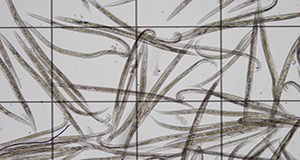
A small nematode worm commonly referred to as a “microworm” has been a staple live feed used in the ornamental aquaculture industry for over 50 years. These worms are small enough to be ingested by the larvae of many commonly cultured ornamental species, and their production methods are simple and reliable. Microworms have the potential to provide appropriate nutrition in a live feed organism that is cultured entirely in-house and involves less labor and cost than newly hatched Artemia. In this 4-page fact sheet published by the UF/IFAS School of Forest Resources and Conservation, Program in Fisheries and Aquatic Sciences, authors Shane W. Ramee, Taylor N. Lipscomb, and Matthew A. DiMaggio discuss the biology, environmental requirements, and culture techniques for microworms and explain their importance for the larval culture of freshwater fish species.
http://edis.ifas.ufl.edu/fa214
Tilapia Lake Virus (TiLV): a Globally Emerging Threat to Tilapia Aquaculture
Tilapia lake virus is a globally emerging virus responsible for episodes of mass mortality in cultured and/or feral tilapia (Oreochromis spp. and hybrids) in Asia, Africa, Central America, and South America. Since 2014, there have been global reports of TiLV disease resulting in 10% to 90% mortality in tilapia fry, juveniles, and adults causing significant economic losses. Currently, the disease has been confirmed in Colombia, Ecuador, Egypt, India, Indonesia, Israel, Malaysia, Mexico, Philippines, Peru, Tanzania, and Thailand. TiLV has not yet been found in the USA or Canada, but it has most recently been reported in 20 aquaculture production facilities across six Mexican states (Chiapas, Jalisco, Michoacán, Sinaloa, Tabasco and Veracruz). This 7-page fact sheet written by Lowia Al-Hussinee, Kuttichantran Subramaniam, Win Surachetpong, Vsevolod Popov, Kathleen Hartman, Katharine Starzel, Roy Yanong, Craig Watson, Hugh Ferguson, Salvatore Frasca Jr., and Thomas Waltzek and published by the UF/IFAS School of Forest Resources and Conservation, Program in Fisheries and Aquatic Sciences describes this important emerging disease and explains how to prevent outbreaks and what to do if you suspect TiLV in an aquaculture facility or in the wild.
http://edis.ifas.ufl.edu/fa213
Myxosporidiosis (Myxozoan Infections) in Warmwater Fish
This 8-page publication written by Justin Stilwell and Roy P. E. Yanong and published by the Program in Fisheries and Aquatic Sciences of the School of Forest Resources and Conservation discusses myxozoans (multi-celled parasites of marine and freshwater invertebrates and fishes). It provides examples of myxozoans that infect aquarium and warmwater fish; describes them and shows their sizes, shapes, and structures; explains their life cycles and how they are transmitted; presents some methods for diagnosing infections in fish; and gives advice for treatment, prevention, and control of myxozoan infections.
http://edis.ifas.ufl.edu/fa201
Oysters for the Future: Proper Oyster Culling Techniques Matter
The eastern oyster (Crassostrea virginica) provides many important functions in coastal environments, from serving a crucial role in the estuary’s food web to improving water quality for beachgoers and wildlife. Oysters are also a popular food choice for people. At times the commercial industry landings value has topped $8 million annually in Florida. This 2-page facts sheet written by Erik Lovestrand and published by the Florida Sea Grant College Program is one in a series that highlights some of the key ecological and human factors important to the long-term sustainability of this valuable fishery.
http://edis.ifas.ufl.edu/sg143
Oysters for the Future: The Value of Science-Based Management in the Oyster Fishery
The eastern oyster (Crassostrea virginica) provides many important functions in coastal environments, from serving a crucial role in the estuary’s food web to improving water quality for beachgoers and wildlife. Oysters are also a popular food choice for people. At times the commercial industry landings value has topped $8 million annually in Florida. This 2-page fact sheet written by Erik Lovestrand and published by the Florida Sea Grant College Program is one in a series that highlights some of the key ecological and human factors important to the long-term sustainability of this valuable fishery.
http://edis.ifas.ufl.edu/sg145
Oysters for the Future: Oystering Rules, The Whys and Wherefores
The eastern oyster (Crassostrea virginica) provides many important functions in coastal environments, from serving a crucial role in the estuary’s food web to improving water quality for beachgoers and wildlife. Oysters are also a popular food choice for people. At times the commercial industry landings value has topped $8 million annually in Florida. This 2-page fact sheet written by Erik Lovestrand and published by the Florida Sea Grant College Program is one in a series that highlights some of the key ecological and human factors important to the long-term sustainability of this valuable fishery.
http://edis.ifas.ufl.edu/sg144
Preventing Escape of Non-Native Species from Aquaculture Facilities in Florida, Part 4: Operational Strategies
Structural strategies to prevent the escape of non-native species from aquaculture facilities have numerous environmental benefits, and research at the UF/IFAS Tropical Aquaculture Laboratory has shown that structural strategies also reduce non-compliance with Florida Department of Agriculture and Consumer Services Best Management Practices. Operational and management strategies, however, are also very important. The strategies discussed in this 6-page fact sheet, the management of water, facilities, and employees, must not be overlooked. Operational strategies are easy, inexpensive, and, when used alongside structural strategies, highly effective, offering an impressive return on a minimal investment in the overall effort to minimize the escape of non-native species.
Written by Quenton M. Tuckett, Carlos V. Martinez, Jared L. Ritch, Katelyn M. Lawson, and Jeffrey E. Hill and published by the School of Forest Resources and Conservation, Program in Fisheries and Aquatic Sciences, this fact sheet is the fourth in a four-part series devoted to educating industry and other stakeholders on the importance of preventing escape of non-native species from aquaculture facilities as well as strategies for non-native species containment and regulatory compliance.
http://edis.ifas.ufl.edu/fa198
Preventing Escape of Non-Native Species from Aquaculture Facilities in Florida, Part 3: Structural Strategies
Non-native species sometimes escape from aquaculture facilities, but producers can prevent these potentially harmful escapes by placing barriers like screens, covers, control structures, and ponds at vulnerable points. Aquaculture producers use these structures to prevent release of non-native species in compliance with Florida Aquaculture Best Management Practices. Further, many of the structures discussed in this 9-page fact sheet are also effective in addressing and maintaining compliance with the discharge requirements of those Best Management Practices. Written by Quenton M. Tuckett, Carlos V. Martinez, Jared L. Ritch, Katelyn M. Lawson, and Jeffrey E. Hill and published by the School of Forest Resources and Conservation, Program in Fisheries and Aquatic Sciences, the fact sheet provides escape prevention strategies and advice for building structures and barriers that can keep potentially harmful non-native species safely contained on aquaculture facilities.
edis.ifas.ufl.edu/fa197
Preventing Escape of Non-Native Species from Aquaculture Facilities in Florida, Part 2: Facility Evaluation Strategies
Understanding how non-native species escape or are accidentally released helps producers better design and operate aquaculture facilities to reduce or prevent escape. Active management of critical points where escape is possible will help achieve regulatory compliance. This 6-page fact sheet written by Jeffrey E. Hill, Quenton M. Tuckett, Carlos V. Martinez, Jared L. Ritch, and Katelyn M. Lawson and published by the School of Forest Resources and Conservation Program in Fisheries and Aquatic Sciences is the second in a four-part series devoted to educating industry and other stakeholders on the importance of preventing the escape of non-native species from aquaculture facilities as well as strategies for non-native species containment and regulatory compliance. It describes farm layouts, explains how fish escape, and outlines a process that aquaculturists can complete to identify potential escape points on their farms.
http://edis.ifas.ufl.edu/fa196
